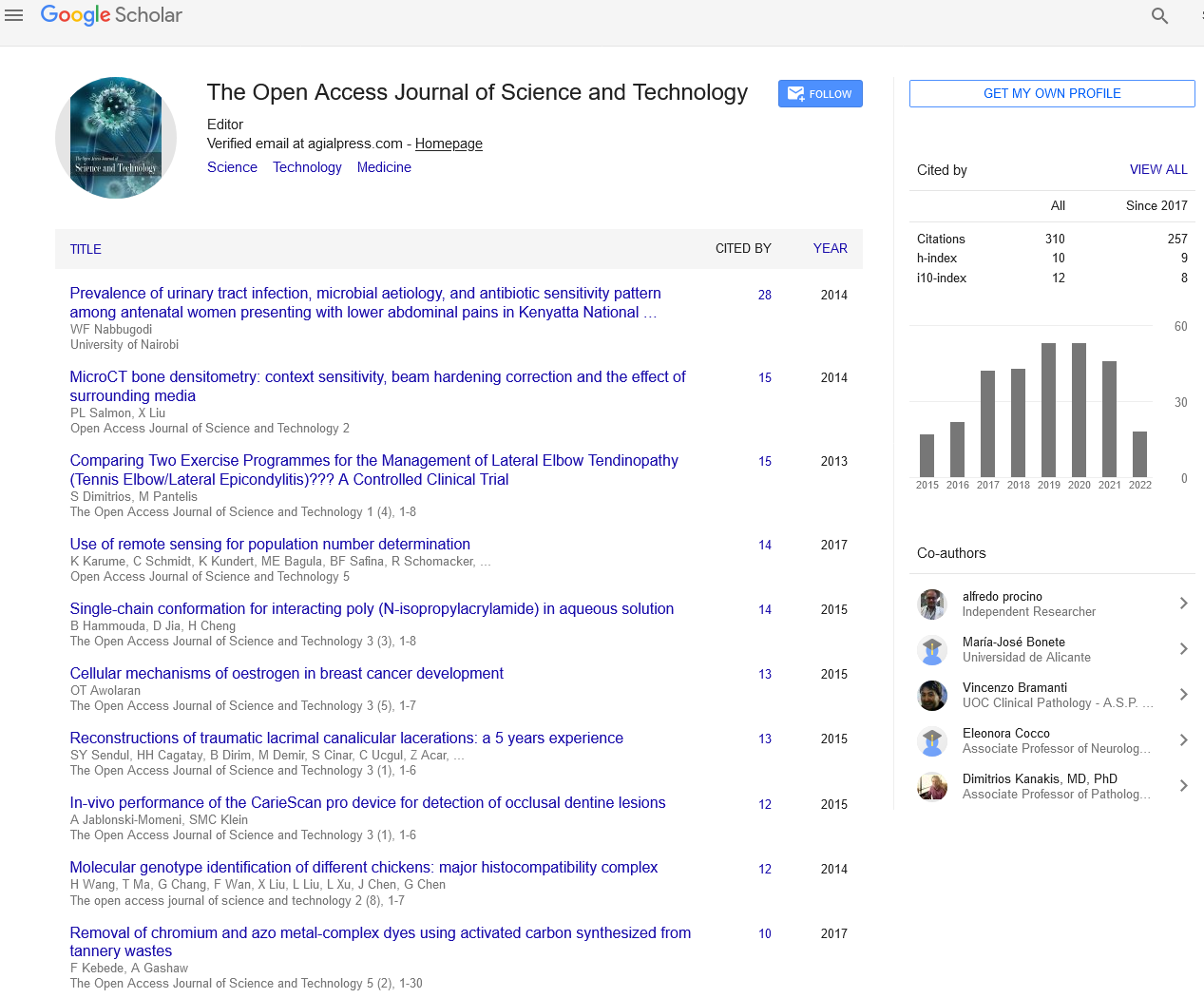The Open Access Journal of Science and Technology
Abstract
Google Scholar citation report
Citations : 409
Indexed In
- Genamics JournalSeek
- Directory of Open Access Journals
- Pollution Abstracts
- Publons
- International committee of medical journals editors (ICMJE)
- Google Scholar
- Chemical Abstract
In- situ immobilization of hydrophobic task-specific room temperature ionic liquid as a modifier on the magnetic multi-wall carbon nanotube: a prospect for speciation of Cr (III) and Cr (VI)
Author(s): Ghazale Daneshvar Tarigh, Masoumeh Bakhtiari, Farzaneh Shemirani
In this research hydrophobic task-specific room temperature ionic liquid (HTSRTIL) coated on the magnetic multi-wall carbon nanotube (MMWCNT) have been
prepared by in-situ electrostatic immobilization. The as-sorbent has been successfully used for the speciation/ extraction of chromium species. Total chromium was determined
by oxidizing Cr (III) to Cr (VI) using KMnO4 in acidic media. The adsorbent was characterized by scanning electron microscopy (SEM), X-ray diffraction (XRD), Energy dispersive x-ray spectrometry (EDS) and Fourier transform infrared spectrophotometer (FT-IR).The analyte being finally determined by UV-Vis spectrophotometry.
The influence of several experimental variables (including pH, amount of adsorbent, sample volume, extraction time and desorption solvent) has been considered in depth in the optimization process. The developed method, which has been analytically characterized under its optimal operation conditions, allows linear\range between 1-200 μg L−1 and detection limits of 0.4 μg L−1. The repeatability of the method expressed as the relative standard deviation (RSD) 4.9% (n = 5) while the enrichment factor is 300. The proposed procedure has been applied for the speciation of chromium from water (tap, spring, river, and well), vegetables (cabbage, broccoli,cress, and leek), soil (from coal mine), and fish with therecoveries in the range from 70 to 103%.
Share this article

